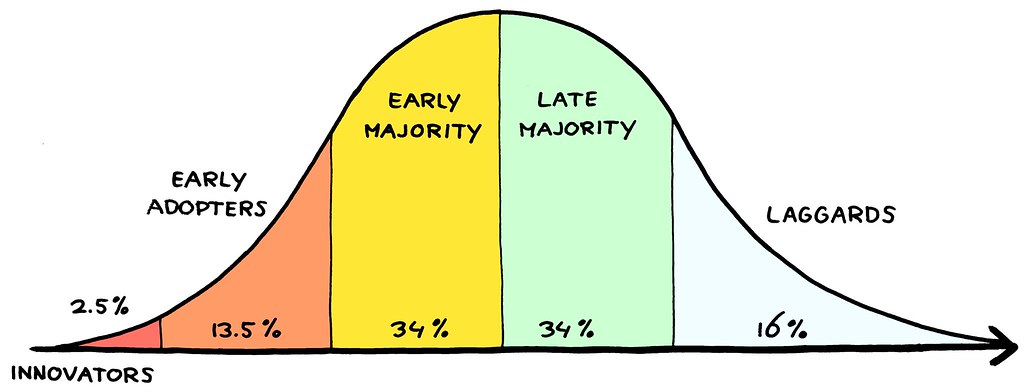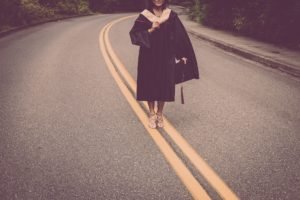The world no longer cares about what you know. The world cares about what you can do with what you know.
~Tony Wagner
Today, discussions about pathways, “future-ready,” personalization, and 21st-century learning take center stage at board meetings, leadership, and staff meetings. We all feel immense pressure to forecast what students need to be successful in the future and are strategically working to develop educators and college and career-ready students. Tony Wagner, Sir Ken Robinson, and Daniel Pink, all known thought leaders, accurately predicted the skills students would need over ten years ago. These skills included creativity, entrepreneurship, global connectedness and “soft skills,” These leaders represented the 2.5% in Rogers Adoption/Innovation Curve and many likely called them “crazy, ” but today their work remains relevant. Communities are coalescing around Most Likely to Succeed and Beyond Measure, documentaries that reflect how education needs to change and our need to move beyond test scores and toward the skills that matter in our new, globally connected world.

What will our future look like and how will we measure the relevant skills students need to be successful in the future? That’s where the Innovation Diploma holds promise. Tom Vander Ark, the author of Smart Parents, Smart Cities, and Getting Smart, is proposing an Innovation Diploma where students are asked to complete and present 20 projects, four to six per year over three or four years. Below is an excerpt copied from his article, Proposal for an Innovation Diploma.
Proposal for an Innovation Diploma
Concept: Ask students to complete and present 20 projects (or more broadly, successful learning experiences). Four to six per year over three or four years, including:
- Launch a business or sustainable initiative (entrepreneurship)
- Build a mobile app (for the business/initiative)
- Secure and serve a customer with marketing services
- Demonstrate success in two work settings (internship)
- Visit two of the world’s greatest cities and compare sustainable development
- Propose a solution to a global health challenge
- Propose a strategy to extend social justice
- Conduct a science experiment and publish the results
- Complete at least two college courses (one online)
- Use data to solve a local problem (community service)
- Publish 40 reviews/reflections (individual) in science and social science
- Publish two major works: papers, books and/or sites (team)
- Produce and present two works of public art (performance, exhibit)
- Explain 10 emerging implications of artificial intelligence on lives/livelihoods
- Apply to a valuable post-secondary experience (college or equal)
What if?
So, as we wait for an idea like that above to take hold, what if we started by not just allowing but PROMOTING and facilitating students’ pursuit of the projects above? Are some of these things happening? Of course, but what if students in every school had the opportunity to pursue these projects? What if the collaboration spanned schools? As pathways gain momentum, consider an innovation pathway. Capstone projects feel like 1988 when you consider the strategic thinking required to tackle the projects listed above over a four-year time span.
Universities feel the same pressures as K-12 and they’re building programs to embrace the change. Xavier, in Cincinnati, Ohio created the Xavier Center for Innovation, the University of Dayton created IDA (Idation-Disruption-AHa!) at the Institute of Applied Creativity for Transformation (IACT) at ArtStreet. Collaboration between K-12, higher education, community, and business will help us catapult our efforts.
Technological advancements make rapid change not just possible, but inevitable. Change in education is like moving a ship, it is slow, but the pressure and rate of change require faster movement to truly prepare students for the future that lies ahead of them. We too must learn new skills and push ourselves out of our comfort zones to be prepared to facilitate this work. It requires a unified effort with everyone rowing in the same direction.
Our task is to educate our students whole being so they can face the future. We may not see the future, but they will and our job is to help them make something of it.
~Ken Robinson

